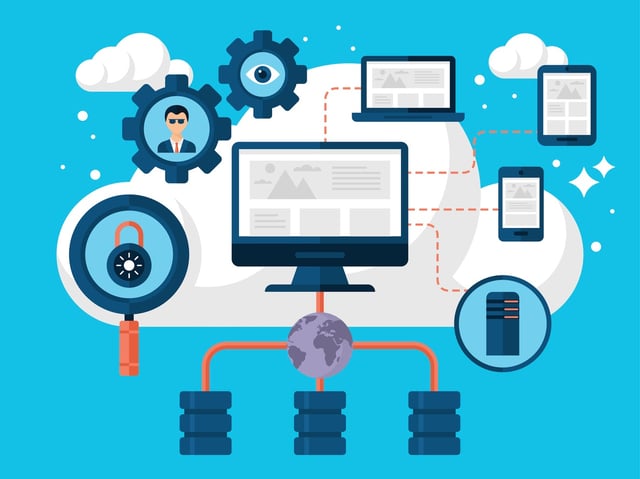
Virtual desktops are the big thing for businesses these days. Over the past few years, virtual desktops (also known as VDI, Desktop-as-a-Service or DaaS, and hosted desktops) have proven to be a more secure, stable, and scalable option than the traditional desktop and server model for small businesses, and most importantly, technology finally exists to deliver the right performance at the right price.
If your company isn't already using virtual desktops, instead of looking at a server upgrade or refresh of your desktop computers, consider virtual desktops as the next step to take for your company’s IT infrastructure. In the process, be sure to consider whether you should have your virtual desktops hosted in a private or a public cloud.
One of the main benefits of virtual desktops is that instead of each users' applications and data living in a box on their desk (i.e. a PC "tower"), it lives in the cloud - a fully redundant and secure environment that's protected from problems, and accessible from any device. When it comes to cloud, we all know the big players are Amazon, Microsoft, and Google; each of these companies have built massive infrastructures around the globe to host everything including websites, email, social media, photos, streaming video services, and more. Anyone with a credit card can take advantage of a public cloud like this and be up and running in under an hour. So why shouldn't your virtual desktops live in one of these public clouds as well?
Unlike websites, email systems, and many other internet resources where a slight delay (typically a second or two) every few minutes can go un-noticed, virtual desktops are real-time environments, and like phone calls or video conferences, a smooth and responsive experience is critical to a good end-user experience.
Public clouds are built to squeeze as many customers onto their hardware and networks as possible, therefore generating the most revenue for the provider. You, as a customer, have no control which hardware your environment sits on, who it’s being shared with, or how "clean" the network connection from the cloud to your desk is. Trying to squeeze any real-time service onto an oversubscribed public cloud alongside photo sharing, video streaming, databases, and other resource-hungry systems can greatly affect the long term performance of your desktops.
We have learned through experience that getting the right performance out of virtual desktops requires a lot of things not available in most public clouds, including ample computing capacity, the fastest all-flash storage environment, specific network configurations, and a very clean internet path between our cloud and our clients. These are just some of the ways that we've been able to squeeze every last millisecond of performance out of our desktop-as-a-service platform.
All technology jargon aside, the other critical component to any company's IT strategy, whether it be in the cloud or not, is support. IT is the most critical part of any organization's operations, and having the right team to call upon who will be there to handle your needs in a timely fashion is essential. Public clouds are run by huge companies which have tens of thousands of customers. When your company has a need, be it big or small, routine or out of the ordinary, can a conglomerate give you the attention, service, and care that your business needs at that very moment?
Public cloud providers are like large supermarket chains - they sell ingredients such as compute, memory, storage, networking, database, and other pieces of the recipe. It's up to their customers to be the "chef" and purchase the right ingredients (resources) and configure them properly. The providers are not in the business of supporting their customers’ final products, and even when one of their ingredients has a problem, it's near impossible to get an answer as to what is wrong or when it will be fixed - all you know is that your finished product isn't working properly (or your "dish" doesn't taste quite right.)
Having the right support team to keep a constant eye on your systems and be there for your business in time of need requires a relationship - something that's not easy if you're a David and your provider is a Goliath. Furthermore, your support team needs to have intimate knowledge and control of the systems that your business is relying on - meaning you should be on your own private cloud, or one provided by your IT support provider.
Can you throw up a bunch of virtual desktops in a public cloud, play around with them, and even try them in a production environment for a short while? Sure. Can you get by with minimal support in the beginning? Of course. Is this a realistic long-term strategy? Probably not. Once you get out of testing and into production, you'll spend much of your time tweaking and testing fixes - kind of like trying to tow a boat with a Toyota Corolla - of course you can try it, but after a week or two, it probably won't work out too well. And while you can surely try troubleshooting, tweaking, and figuring things out along the way (you will definitely learn a lot by doing so), as a business owner, is that really the best use of your time?






